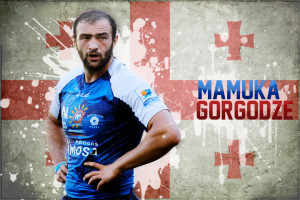 Amid the final week of Rugby World Cup, one of South Africa’s most influential sporting leaders came to town.
Amid the final week of Rugby World Cup, one of South Africa’s most influential sporting leaders came to town.
Kelly Fairweather, former player and coach, runs world hockey. The sign on his desk in Lausanne says “CEO: International Hockey Federation”.
It’s a big deal. The IHF has 133 members around the globe and hockey was the third biggest sport at the London Olympics in terms of tickets sold.
Fairweather is different to many of the stuffy blazer brigade in that he actually played sport, endured the highs and lows and transferred his passion into administration. He was appointed rather than voted in by a boot-licking board. This is good and ought to be the template for all sport, but that would mean turkeys voting for Christmas. It’s never going to happen.
His perspective on international sport was revealing, particularly as he used to be a staffer at the International Olympic Committee, which gives him unique cachet.
Fairweather threw out the fact that the age of the average Olympics watcher is 40-plus. Implicit in this statistic is that the IOC needs to change its game to draw in a fresh, vibrant audience.
“How do you keep people interested?” he asked rhetorically. “It’s the challenge every sport faces.”
Fairweather told his board: “To change our sport, we need a revolution.”
International hockey promptly launched its own response and gave it a name: “Hockey Revolution”.
The revolution has four pillars: entertainment, increased professionalism, a bold and powerful image and the generation of millions of new followers. At its heart is the need to future-proof the sport for at least 20 more years.
It’s a noble ideal and it reflects a CEO who possesses both vision and ambition.
Hockey is toying with more fundamental plans, like reducing team numbers, narrowing field size and even syncing goals with neon technology. Not mere revolution, but evolution.
At the heart of Fairweather’s talk was the need for sport to remain relevant and interesting, particularly with Generation Z who live their lives through mobile phones. Live sport, and even TV-watching, is low on their list of priorities.
Which got me thinking about local rugby. I long subscribed to the belief that if unattractive rugby was a means to a successful end, that was okay. Few SA teams have truly set the pulses racing in the past two decades. This is because we’ve always valued the piano movers above the piano players, the power over the poise.
We’ve done okay by it, but this style and philosophy has begun to betray us in recent years. Cue RWC 2015. Once teams are able to match our muscle, we have no plan B. We saw as much at the World Cup where the rugby the Springboks dished up was antediluvian. It won us few friends.
It’s not stretching the point to say that the Springboks are duty-bound to change their game given the realities painted by Fairweather. You can’t play a stodgy game, which is already on the backfoot because of the multitude of complex laws, and expect to gain converts. Why, indeed, should a Generation Z kid bother with a diversion that offers little in excitement or entertainment?
Event experience is key and quite apart from the sideline entertainment, food and beverages, the game itself must be compelling and appealing. This is why World Rugby’s Sevens programme has been so successful, according to Fairweather. It’s all-action rugby combined with entertainment and bite-size chunks of action.
International basketball is similar. The NBA experience is exhilarating from start to finish because fan engagement is central to the NBA’s business. The fans matter.
Ironically, as Fairweather was giving his state of the (hockey) nation address, the SA game was kicked in the teeth with word from on high that neither the men’s nor the women’s team would be attending the 2016 Olympics via the Africa route. This is because the standard is considered inadequate by the local Olympic body. Our teams have been banished through no fault of their own, but rather the view that hockey on the continent is no measure of success.
Fine. But if Olympic selection was reserved exclusively for potential medalists, Team SA would number fewer than 10. – © Sunday Tribune




